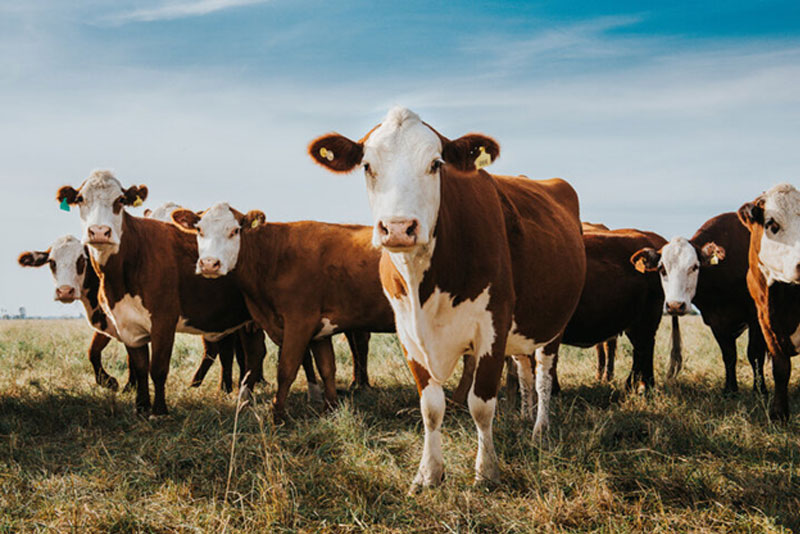The Impact of HPAI A(H5N1) Bird Flu Outbreak in Dairy Cows on Livestock Futures
The recent outbreak of Highly Pathogenic Avian Influenza A (HPAI A(H5N1)) in dairy cows marks a significant and unprecedented event in animal health. First reported on March 25, 2024, this is the first instance of HPAI A(H5N1) affecting cattle, previously known primarily as a bird flu affecting poultry species. The Centers for Disease Control and Prevention (CDC) has confirmed a human infection linked to exposure to these infected dairy cattle in Texas, intensifying concerns about the zoonotic potential of this strain. This event’s implications on livestock futures are profound, echoing past disruptions caused by animal disease outbreaks but presenting unique challenges due to the novel host species and the scale of the outbreak.

Immediate Impact on Cattle Futures
The discovery of HPAI A(H5N1) in dairy cows has direct implications for cattle futures trading on commodity exchanges such as the Chicago Mercantile Exchange (CME). Historically, the emergence of a significant disease in livestock populations leads to immediate volatility in futures prices due to anticipated disruptions in supply and changes in consumer behavior. For instance, during the BSE (Bovine Spongiform Encephalopathy) crisis in the early 2000s, cattle futures experienced significant drops as countries imposed import bans on British beef, which created uncertainty and led to a global reassessment of beef safety.
In the present scenario, the primary concerns include:
- Supply Disruptions: Quarantines and culling of infected or exposed animals reduce the immediate supply of dairy and possibly beef products if the disease affects broader cattle populations.
- Demand Fluctuations: Public fear of contracting the disease can lead to decreased demand for beef and dairy products, even though HPAI A(H5N1) primarily spreads from animal to animal and not typically through food consumption.
- Regulatory Actions: Increased costs for cattle farmers and dairy producers are likely as new regulations and biosecurity measures are implemented to control the spread of the disease.
Examples from Past Outbreaks
Examining past outbreaks provides insights into potential market reactions and long-term considerations:
- 2003 BSE Outbreak in the US: When the first case of BSE was discovered in Washington state, beef exports from the US plummeted as over 30 countries, including major markets like Japan and South Korea, immediately banned American beef. Futures prices for live cattle dropped sharply due to the sudden fall in export demand.
- 2014-2015 Avian Influenza Outbreak: Although this outbreak primarily affected poultry, it led to the destruction of millions of birds, severely disrupting poultry markets and associated grain futures due to reduced feed demand. Similar widespread culling in cattle could lead to significant market adjustments.
Long-Term Considerations
The long-term impact on cattle futures will depend on several factors:
- Eradication and Control Measures: The effectiveness of measures to control the outbreak will play a crucial role in restoring market stability. Successful containment can lead to a quicker recovery in futures prices, while ongoing issues could lead to sustained market depression.
- Consumer Confidence: How quickly consumer confidence in beef and dairy safety can be restored influences demand recovery. Historical evidence shows that recovery can be slow, as seen with the prolonged impact of BSE on European beef consumption.
- Global Trade: International responses, including trade restrictions imposed by importing countries, can exacerbate the impact on futures. For cattle producers reliant on export markets, these restrictions could have severe financial implications.
Trading Strategies
Traders might consider several strategies in response to the outbreak:
- Short Selling: Anticipating a drop in cattle futures, traders might take short positions to capitalize on falling prices.
- Options for Hedging: Purchasing options can provide traders protection against their positions’ downside risk, particularly in such volatile conditions.
- Diversification: Traders might look to diversify their portfolios to mitigate risks associated with a focus on cattle futures.
The outbreak of HPAI A(H5N1) in dairy cows represents a novel and serious challenge to the livestock industry, with significant implications for cattle futures. Drawing from past experiences with livestock diseases, the market is likely to face periods of volatility and uncertainty. Traders must remain vigilant, responsive to new information, and consider strategic positions that account for both immediate impacts and longer-term market adjustments.
Ready to start trading futures? Call US 1(800)454-9572 – Int’l (310)859-9572 email info@cannontrading.com and speak to one of our experienced, Series-3 licensed futures brokers and start your futures trading journey with E-Futures.com today.
Disclaimer – Trading Futures, Options on Futures, and retail off-exchange foreign currency transactions involves substantial risk of loss and is not suitable for all investors. Past performance is not indicative of future results. You should carefully consider whether trading is suitable for you in light of your circumstances, knowledge, and financial resources. You may lose all or more of your initial investment. Opinions, market data, and recommendations are subject to change at any time.
Important: Trading commodity futures and options involves a substantial risk of loss. The recommendations contained in this writing are of opinion only and do not guarantee any profits. This writing is for educational purposes. Past performances are not necessarily indicative of future results.
**This article has been generated with the help of AI Technology. It has been modified from the original draft for accuracy and compliance.
***@cannontrading on all socials.




